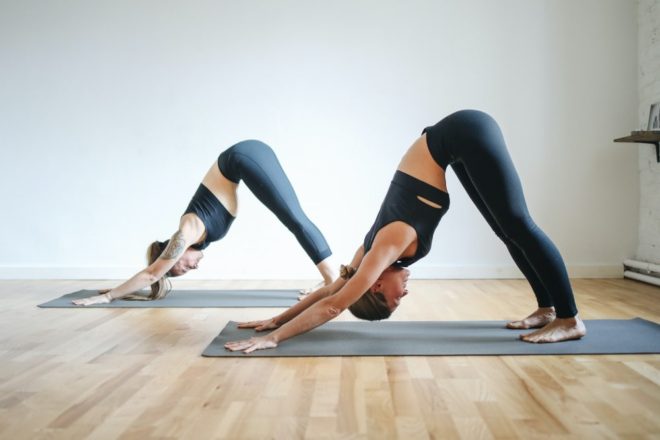Physical exercise is critical for our mental health and wellbeing. Data from the Mental Health Million Project is highlighting this important connection.
Doctors, psychologists, and other health professionals often recommend exercise for patients struggling with their mental health. The idea is that physical movement can help lower symptoms of depression, anxiety, and other disorders. Data from the Mental Health Million Project supports this common advice. As seen in the infographic below, participants who exercise daily for 30 minutes or more have mental wellbeing scores that are over twice as high as those who do not exercise at all.

Other studies have shown that exercise improves cognition in older adults and can benefit those who have trouble sleeping. But how exactly does physical movement help boost our mood and mental health? In this post, we’ll explain what’s going on with your body and brain when you exercise and discuss how a little bit of extra movement can go a long way.
What happens to the body during exercise?
The physical benefits of exercise are well-established. Regular physical movement can help prevent cardiovascular problems and lower the risk of Type 2 diabetes. There is also evidence that shows exercise can improve our mental health. When a person exercises, the brain releases many chemicals that can help improve their mood. First, the brain releases endorphins, which are known as “feel-good” chemicals. The Mayo Clinic describes endorphins as “natural cannabis-like brain chemicals” that can enhance mood and increase feelings of well-being.
Exercise also boosts serotonin levels, which send messages to the brain about appetite, sleep, and mood. There is an increase in dopamine, which is part of the brain’s reward center and also increases in glutamate. Glutamate regulates the brain’s nerve cells that determine a person’s heart rate and their ability to think clearly.
Finally, the brain produces BDNF (brain-derived neurotrophic factor) during exercise, which is a protein that creates and protects the types of neurons that help with memory, emotional regulation, and learning. Low BNDF and glutamate levels have been associated with depression, anxiety, and other mood disorders.
What “counts” as exercise?
Aerobic exercise, like walking and running, has been shown to ease depression symptoms. One study found that 20 minutes of moderate to intense cycling helped individuals with ADHD increase their energy and lower common feelings of confusion, depression, and fatigue. Also, resistance training can reduce depression symptoms. Resistance training is any exercise that helps you build muscle strength, like squats and push-ups or free weights. A meta-analysis of 33 studies showed that resistance training significantly decreased depression symptoms regardless of their health status or the amount of resistance training they did.
Moderate or intense workouts aren’t the only types of physical activity that can help ease anxiety and depression. Low-intensity mindful movements can also decrease mental health symptoms. Mindful movements, like those in yoga, bring attention back to the body. The movements often help people improve their flexibility and balance, both of which are associated with lower depression symptoms. Mindful movements allow people to notice how their bodies feel and understand where their bodies are in space. One study showed that regular yoga reduced PTSD symptoms so much that some participants no longer needed treatment.
Getting Started
A person’s physical activity level lies on a spectrum between minimal movement and regular moderate/intense activity. But you don’t have to jump from the couch to the cross-fit gym to see improvements. Small changes in your physical activity spectrum can result in big benefits for those with mood disorders. Below is a list of ways to get started:
First, people are more likely to stick with new routines if they do the activities they enjoy. Make a list of activities that you would look forward to doing each week.
Second, identify your challenges before you start and figure out if and how you overcome them. For example, perhaps there is no room in the budget for a gym membership right now. Still, you can get around that by searching for free workout videos on YouTube.
Third, if you enjoy being in groups of people when you’re exercising, you can find group classes available in your community (many of which are gathering via Zoom due to COVID). If you’d rather not join a group, that’s okay, too. Choose whatever environment is best for your needs.
Fourth, Start slowly. Even adding 10-15 minutes of exercise can help with depression symptoms. You can build your way up to 30 if you want to.
Finally, give yourself some credit. It can be hard to find the motivation to move, so all of your small steps deserve a celebration!

